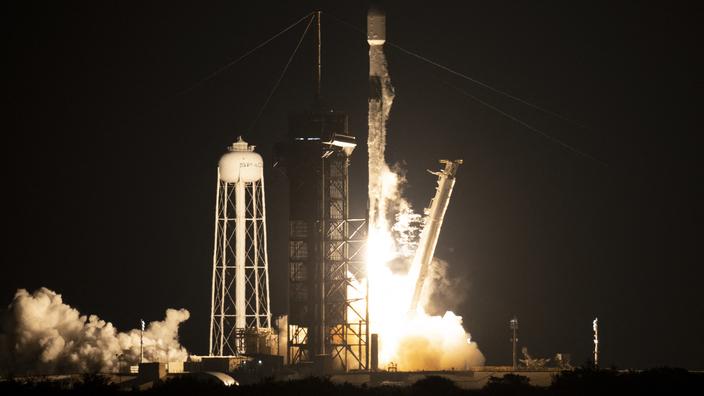The second stage of a SpaceX rocket that took off seven years ago will crash on the Moon in March, according to experts, who have recalculated the trajectory of this object left abandoned in space.
Read alsoFeel the takeoff of the Ariane 5 rocket
The rocket was used in 2015 to orbit a climate observation satellite on Earth, the Deep Space Climate Observatory (DSCOVR).
Since that date, the second stage used to propel it floated in the cosmos in an orbit called "
chaotic
" by mathematicians, explained Wednesday January 26 to AFP astronomer Bill Gray, who discovered the new trajectory.
A certain collision
The object passed quite close to the Moon at the beginning of January, which modified its orbit, detailed this person in charge of “
Project Pluto
”, a software allowing to calculate the trajectories of asteroids and other objects, used by programs observations funded by NASA. A week later, the expert was able to observe the remains of the rocket again and realized that it should crash into the far side of the Moon on March 4.
After appealing to the community of amateur astronomers to make new observations, the data was confirmed.
The precise time and place could still change by minutes and kilometers, but the collision is certain.
"
I've been tracking space junk like this for about 15 years, and this is the first unintended lunar impact
" detected, he said.
Read alsoThe takeoff of an Ariane 5 rocket, as if you were there...
The impact of this approximately four-tonne object will not be visible from Earth when it occurs.
But it should cause a crater which could be observed by scientists later, in particular by NASA LRO (Lunar Reconnaissance Orbiter) or Indian Chandrayaan-2 probes, and thus allow us to learn more about lunar geology. .
Spaceships have been intentionally launched on the Moon for scientific purposes in the past.
In 2009, NASA sent a second stage rocket to crash in an area near the South Pole to study the presence of water.
But most rockets are launched less far, which usually allows the second stage of SpaceX rockets to re-enter Earth's atmosphere, where it crumbles above the ocean.
These unplanned lunar impacts could however multiply in the future, according to Bill Gray, in particular because of the objects that will be left behind by the American or Chinese lunar programs.

